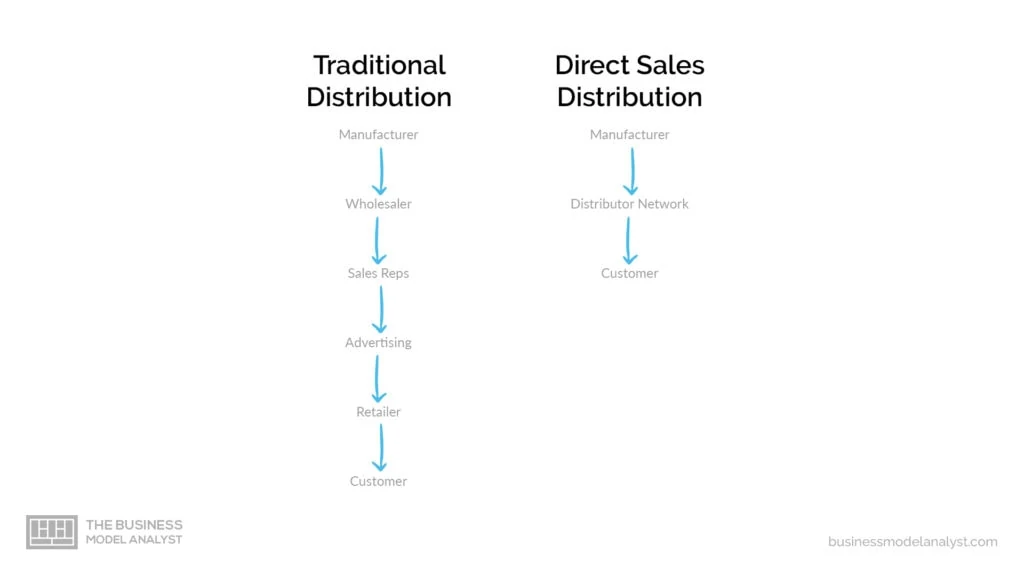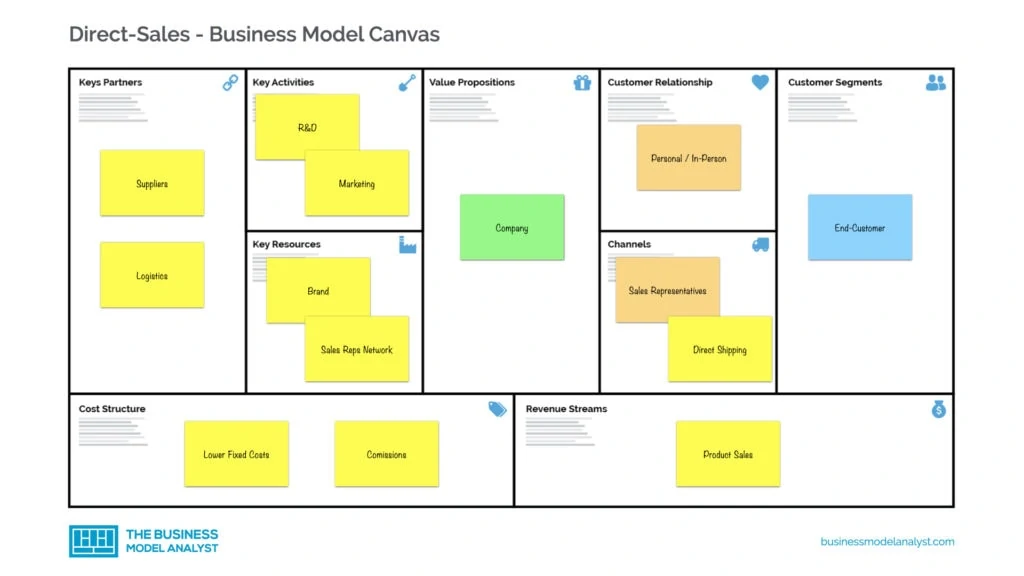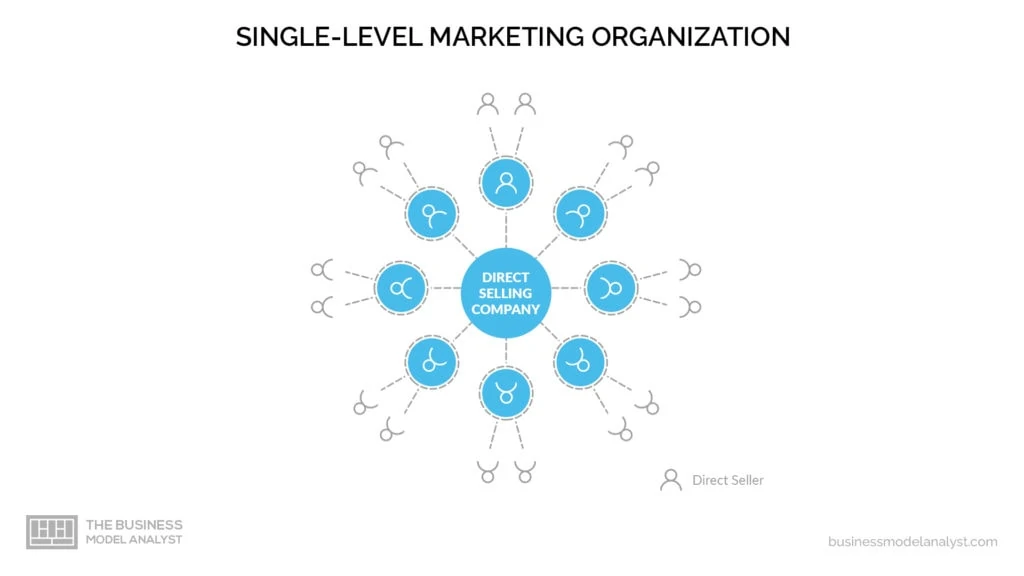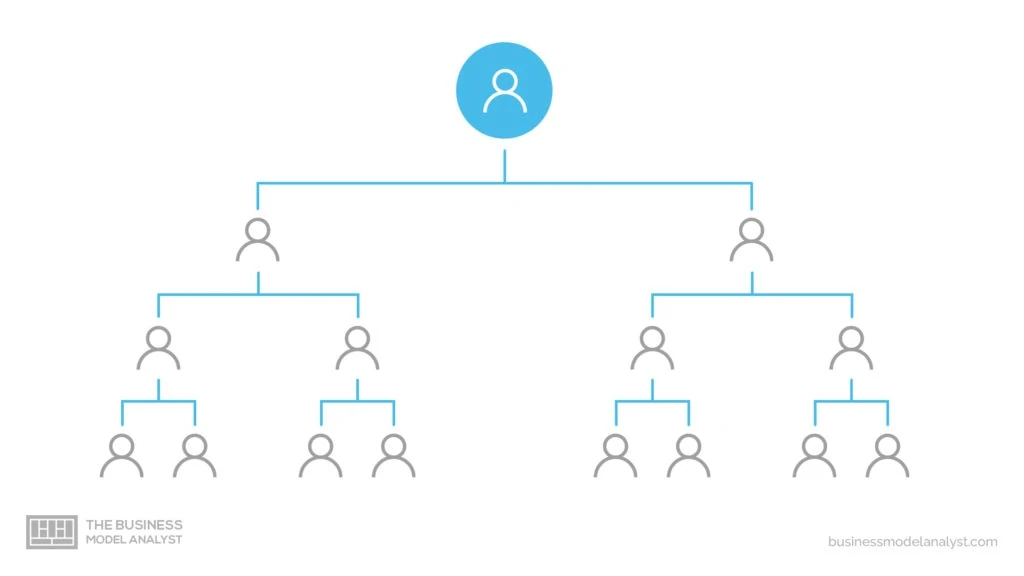In the Direct Sales Business Model, the product or service is demonstrated directly to the end consumer by a network of sales representatives (or sales consultants). Different from traditional retail, where products are sold to distributors and stores before they get to the end customer, the Direct Sales business model is not exactly direct per se but aims to cut some middlemen and benefit from higher margins with a more personal relationship with consumers. Let’s learn more about Direct Sales Business Model, its advantages, types, and revenue streams.
Contents
How the Direct Sales Business Model works
In the Direct Sales Business Model, the supply chain will reduce intermediaries (regional distribution center, wholesaler, stores) to sell more directly to consumers, in a non-retailing environment. The products can go from the producer directly to the end consumer, or, at least, direct to a representative, for example. This business model, therefore, relies heavily on a network of sales people and on a close connection with the customer.

Products sold through the Direct Sales Business Model are rarely found in typical retail locations, making the sales representatives the only method to acquire them. Even some B2B businesses use direct selling to target and sell to the ones who can use their services.
Direct Sales Business Model Canvas
Let’s take a look at how the direct sales business model structure on the business model canvas

Types of Direct Sales Business Models
Single-level direct sales

Performed one-on-one or door-to-door, via personal presentations using physical or online catalogs. Income is based on sales commissions and possible bonuses when reaching some goals. Usually, the salesperson is an independent contractor, who takes the order that will be shipped directly to the end customer by the company they represent. This method generally doesn’t need stocks but requires a high level of training and techniques on sales. Many salespeople work full time – even in a career plan –, but there are others on a part-time basis, looking for an extra income. Example of business: Avon
Host or party-plan sales

Performed before a group, the rep or distributor brings together potential customers in the same place (online or offline) and make a presentation of their product or service. Income is based on commissions and on the recruitment of other reps. These get-togethers are usually referred to as parties. But, according to the company’s marketing, they may be called cooking shows, workshops, tasting, makeovers, etc. It’s very common for these parties to be held at a customer’s home – the host. This host will be rewarded with discounts or free products in exchange for inviting their friends and acquaintances as guests to the party. The objective is to present the products in a fun, relaxing environment. And this model ensures the power of social proof: whenever a person buys something, it encourages the rest to do the same. Examples of businesses: Scentsy and Stella & Dot.
Network or multi-level marketing

It associates the methods used in both single-level and party-plan sales since the income is earned through commissions on the rep’s sales as well as on the sales made by the partners they recruited into the business. It’s, thus, a network structure, designed to move products among independent reps, both for personal use and sales. So, anyone can join the network either to earn money or to get a discount on their purchases. Companies can grow large and sell good amounts of products through a wide range of network members, who order the merchandise on a regular basis, for as long as they see value in the partnership and in the product. Examples of businesses: Mary Kay and Amway.
Direct Sales Business Model’s Advantages
- Strong Customer Relationships: especially when it comes to small businesses, the Direct Sales Business Model provides building a meaningful personal relationship with customers. Besides developing a sense of loyalty from the customers towards the brand, it also helps understand and, thus, adapt to consumer’s needs and preferences. And returning customers are much cheaper than acquiring new ones.
- Effective Marketing Strategies: due to that close relationship with the customers, the salesforce is able to interact directly with the end buyers and, thus, learn their language and get feedback about the campaigns. This helps to enhance marketing messages e customize it according to the target audience.
- Adaptability to the Market: still due to the proximity to the end customers, this business model is able to adapt and reinvent better in cases of economic instability and crisis. Because the entrepreneur can visualize what their audience need and want, invest accordingly, by scaling back or up production or scale-up based on real figures.
- Cost and Price Control: as the owner is closer to the end consumer, they can control better their price and distribution, especially regarding competition in the market. Moreover, as this business model cuts off steps in the supply chain, it will certainly reduce costs involved, being able to practice a lower and more competitive price.
- Access to Customers: especially for small businesses, it is difficult to build a client base at the beginning of a venture. The direct sales allow reps to start selling to their own acquaintances, family, and friends. So, the entrepreneur doesn’t have to invest lots of money in marketing campaigns to make their product to be known.
Direct Sales Business Model’s Challenges
To finish our considerations about the Direct Sales Business Model, it is important to highlight its disadvantages – just like any other business model faces. In this case, the access to customers which is usually done by reaching the rep’s peers may also be viewed as a kind of intrusion, as that may seem opportunism into personal relationships. And, finally, since these businesses generally experience high levels of turnover, the entrepreneurs have to spend money and time recruiting and retaining talents.

